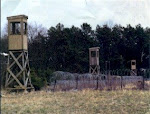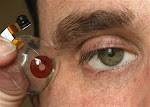 A Texas watchdog group on Tuesday released a list of accidents at laboratories that conduct research on potential biological weapons agents, the Fort Worth Star-Telegram reported (see GSN, July 2).The list issued by the Sunshine Project includes incidents dating back to 2003 at eight universities, along with an equipment failure at the Maryland campus of the National Institutes of Health. Among the mishaps: a University of New Mexico researcher was poked by a needle containing anthrax in 2003; a Medical University of Ohio researcher became infected with Valley Fever in 2004; and personnel at the University of Illinois at Chicago in 2004 violated safety procedures by keeping laboratory and anteroom doors open at a Biological Safety Level 3 facility.“In addition to lab-acquired infections and exposures, other types of dangerous problems have occurred, such as unauthorized research, equipment malfunction and disregard for safety protocols,” the Sunshine Project said in its press release.Other accidents at other institutions might never have been reported, according to the group, which has publicized delays by Texas A&M University in reporting exposure to disease agents. It called for stronger rules and less research on bioweapons materials.“Reporting requirements, to the extent that they exist, are not well enforced unless (nongovernmental agencies) or the press make a stir — so the labs hide problems and think that accident reporting is for masochists,” said organization director Edward Hammond.There is no great cause for public concern about such incidents, said biosafety consultant Jonathan Richmond, former head of the Health and Safety Office at the Centers for Disease Control and Prevention. He said he did not believe that disease outbreaks resulted from any of the more than 5,000 laboratory infections reported in the past five decades, the Star-Telegram reported.“There are a number of institutions who have failed to follow the rules, but that doesn’t mean you need to make more rules,” he said. “Instead, you need to get people to cooperate and follow the rules that are in place” (R.A. Dyer, Fort Worth Star-Telegram, July 4).The Centers for Disease Control has recorded just 15 potential exposures at laboratories to highly dangerous disease agents since the beginning of 2006, The Dallas Morning News reported yesterday. These incidents did not cause any infections or illnesses.Infections are “very uncommon,” said Malak Kotb, head of the Mid-South Center for Biodefense and Security at the University of Tennessee.“There are very strict guidelines about how you handle different organisms, how to transport them, what kind of protection you wear. You have to go through very rigorous training.”Increased federal funding of biodefense research (see GSN, June 11) is sure to boost the number of exposures and infections, critics say.“There is, naturally, a higher level of risk,” said Daryl Kimball, executive director of the Arms Control Association.Laboratory mishaps “are hard to avoid, no matter how stringent the safety procedures may be. … It raises legitimate questions about these facilities, and the fact that some are located in or near populated areas” (Emily Ramshaw, The Dallas Morning News, July 4).
A Texas watchdog group on Tuesday released a list of accidents at laboratories that conduct research on potential biological weapons agents, the Fort Worth Star-Telegram reported (see GSN, July 2).The list issued by the Sunshine Project includes incidents dating back to 2003 at eight universities, along with an equipment failure at the Maryland campus of the National Institutes of Health. Among the mishaps: a University of New Mexico researcher was poked by a needle containing anthrax in 2003; a Medical University of Ohio researcher became infected with Valley Fever in 2004; and personnel at the University of Illinois at Chicago in 2004 violated safety procedures by keeping laboratory and anteroom doors open at a Biological Safety Level 3 facility.“In addition to lab-acquired infections and exposures, other types of dangerous problems have occurred, such as unauthorized research, equipment malfunction and disregard for safety protocols,” the Sunshine Project said in its press release.Other accidents at other institutions might never have been reported, according to the group, which has publicized delays by Texas A&M University in reporting exposure to disease agents. It called for stronger rules and less research on bioweapons materials.“Reporting requirements, to the extent that they exist, are not well enforced unless (nongovernmental agencies) or the press make a stir — so the labs hide problems and think that accident reporting is for masochists,” said organization director Edward Hammond.There is no great cause for public concern about such incidents, said biosafety consultant Jonathan Richmond, former head of the Health and Safety Office at the Centers for Disease Control and Prevention. He said he did not believe that disease outbreaks resulted from any of the more than 5,000 laboratory infections reported in the past five decades, the Star-Telegram reported.“There are a number of institutions who have failed to follow the rules, but that doesn’t mean you need to make more rules,” he said. “Instead, you need to get people to cooperate and follow the rules that are in place” (R.A. Dyer, Fort Worth Star-Telegram, July 4).The Centers for Disease Control has recorded just 15 potential exposures at laboratories to highly dangerous disease agents since the beginning of 2006, The Dallas Morning News reported yesterday. These incidents did not cause any infections or illnesses.Infections are “very uncommon,” said Malak Kotb, head of the Mid-South Center for Biodefense and Security at the University of Tennessee.“There are very strict guidelines about how you handle different organisms, how to transport them, what kind of protection you wear. You have to go through very rigorous training.”Increased federal funding of biodefense research (see GSN, June 11) is sure to boost the number of exposures and infections, critics say.“There is, naturally, a higher level of risk,” said Daryl Kimball, executive director of the Arms Control Association.Laboratory mishaps “are hard to avoid, no matter how stringent the safety procedures may be. … It raises legitimate questions about these facilities, and the fact that some are located in or near populated areas” (Emily Ramshaw, The Dallas Morning News, July 4).http://www.nti.org
As in the days of Noah...






















































































.bmp)

























.bmp)